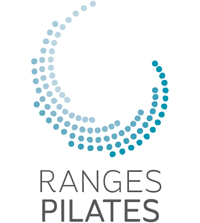Pilates: because smaller muscles need love too
One of the hardest parts of Pilates is getting the smaller stabilising muscles working, particularly if you have an injury.
What makes it especially hard is that you can’t feel them working. If you are used to feeling the “burn” at a gym, you won’t with these stabilisers. It makes sense, if you did feeling them working, and it would be very distracting and painful as these muscles are always activated to some degree, just holding your body together in alignment.
Your body is made up a number of different muscle types, but in general we have 2 main types the movers and the stabiliser. The movers, move our body around, for instance the quadriceps, our major thigh muscle group, bend our kneesand the biceps bend our elbow.
The stabiliser muscles hold us upright and in good alignment. These muscles are much smaller and are to some degree working all the time. An example is the rotator cuff, a group of four muscles, which help to hold the shoulder joint in good position.
If any of these smaller stabilisers muscles are not working correctly, the body will start to compensate and use the moving muscles to help stabilise, an example of this is your back. If your stabilisers of your spine are not working correctly because of poor alignment, the surface moving muscles of the spine will try to help stabilise instead. They can do this for a short while, but these moving muscles fatigue quite quickly, and if forced to work will eventually start to be very painful, and even go into spasm.
What we try to do in Pilates is get these compensating moving muscles to not work so much and to get the smaller stabilisers to be stronger. Particularly important is to get the correct muscles recruitment sequence. One of the hardest parts about getting these small stabilisers working……you can’t feel them working! And that’s where I come in, my role in teaching you, is to make sure you are using the right muscles. After a while you will build that awareness and learn when they are working.
When the smaller stabilising muscles are strong in your feet, ankles, knees, hips, pelvis, back, shoulder, arms and neck, it gives your entire body much more overall strength
Quote, thank you to @pilatay Instagram post
